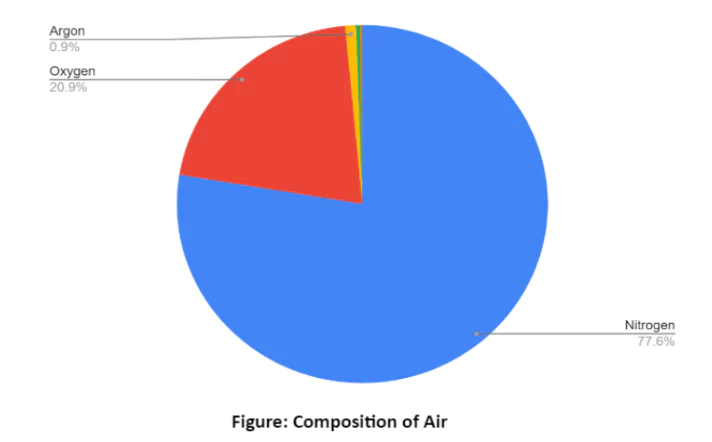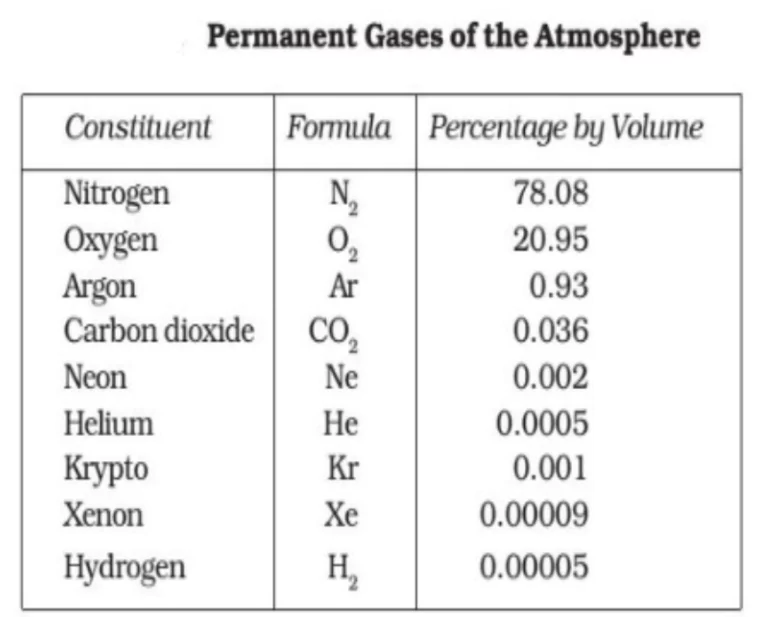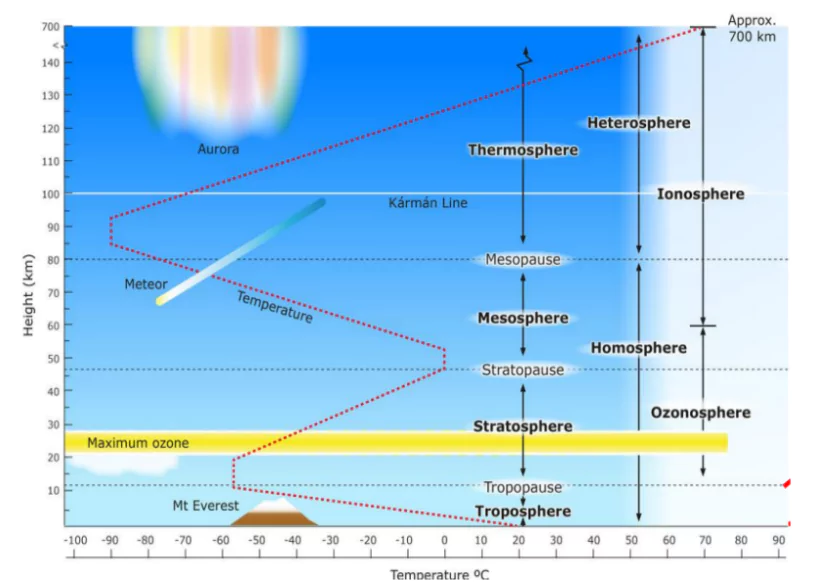![]() April 29, 2024
April 29, 2024
![]() 3050
3050
![]() 0
0
The Earth’s atmosphere enveloping Earth is a blend of gases, water vapour, and dust particles. Oxygen, vital for breathing, and carbon dioxide, essential for plant growth, are prominent components. Within the lower atmosphere, their proportions vary, with oxygen nearly absent at 120 km altitude, and carbon dioxide and water vapor confined to heights below 90 km. This dynamic composition underscores the importance of understanding atmospheric layers for sustaining life on our planet.
 Concentration of Atmospheric Mass: 99% of the atmosphere’s total mass is concentrated within a range of 32 kilometers from the Earth’s surface.
Concentration of Atmospheric Mass: 99% of the atmosphere’s total mass is concentrated within a range of 32 kilometers from the Earth’s surface.  Water Vapour: It is a variable gas that decreases with altitude. Water vapour also decreases from the equator towards the poles.
Water Vapour: It is a variable gas that decreases with altitude. Water vapour also decreases from the equator towards the poles.
 Mesosphere: Extends up to 80 km.
Mesosphere: Extends up to 80 km.
| Must Read | |
| Current Affairs | Editorial Analysis |
| Upsc Notes | Upsc Blogs |
| NCERT Notes | Free Main Answer Writing |
<div class="new-fform">
</div>
Latest Comments